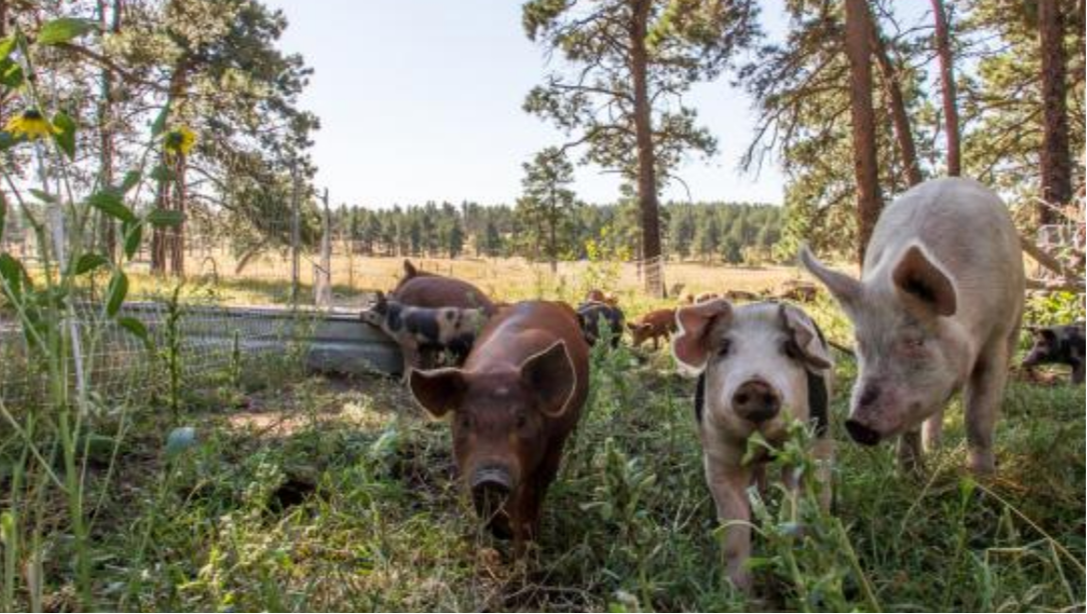Indigenous Agricultural Practices: Cultivating Our Connection with Food

The French have a saying that goes, “Tell me what you eat and I’ll tell you who you are,” while the Germans have been heard uttering the phrase, “You are what you eat,” for over a millennia. But what happens when your diet is made up of hot dogs made from processed and factory-farmed meat, with a side of fries made from potatoes that were grown and shipped from across the world? Do you really have a connection with your food if you don’t know where it comes from? Many attribute this disconnect to industrial agriculture and factory farming.
Over the brief span of the 20th century, agriculture underwent greater change than it had since it was first adopted some 13,000 years ago. In fact, modern U.S. agriculture has been dubbed “the most efficient in the world,” meaning the cost of production is incredibly low. The public health and ecological costs of industrialization, however, are not included in the prices of food.
Although the industrialization of agriculture has allowed higher yields to provide food for growing populations, it comes with a laundry list of drawbacks. Some disadvantages include deforestation, pest and weed resistance to chemicals, soil degradation, water pollution, negative impact on natural habitats, and climate change.
In response, a growing number of farmers have adopted alternative methods of producing food. Well, more like “traditional” methods we have seen before.
Long before the arrival of Europeans to America, the Indigenous population protected local ecosystems and preserved biodiversity through land management and sustainable farming practices. In fact, there is a myth that European settlers arrived on “untouched land,” when in reality Indigenous Americans had long been shaping their environment.
This new movement of modern-day farmers looking to change the game in agriculture has taken to adopting some of the traditional Indigenous ways of farming, and incorporating them into something called “regenerative farming.” Thanks to Indigenous Americans, we have a guide to sustainable agriculture and land stewardship that we know work.
Intercropping and Polycultures
For hundreds of years, Indigenous Americans have planted more than one crop together in a practice known as intercropping. Successful intercropping relies on growing crops that complement each other and minimally compete for resources. The Iroquois people cultivated the “Three Sisters,” a combination of corn, beans, and squash. In this system, the corn stalks provide a natural trellis for the beans to grow on, which help the corn grow by adding nitrogen to the soil. At the same time, the squash vines act as a “living mulch” that maintains soil moisture and prevents weeds from growing. Polycultures, or planting different species of plants in the same area in a way that imitates nature, has similar benefits to intercropping.
Water Management
Indigenous communities would prioritize water management, adapting their practices to the surrounding climate. For example, the Iroquois who lived in a humid climate planted the Three Sisters on mounds of soil, which drains the soil of excess moisture. In contrast, the Hohokam tribe here in Arizona dug canals as an irrigation system to facilitate farming in our arid climate.
Agroforestry
Indigenous Americans also practiced Agroforestry, which is the management of trees, crops, and animals together in a way that benefits all three. Silvoculture, the management of tree growth and forest composition, was used to foster wildlife populations and improve hunting. Similarly, Indigenous Americans grazed animals among trees using a practice now known as silvopasture. Both of these methods can improve forest health, increase soil carbon sequestration, provide shade for animals, and expand habitat for wildlife.
Permaculture
Permaculture refers to agricultural systems that mimic natural patterns while allowing for production. By planting species that accumulated or ‘fixed’ nitrogen and other vital nutrients to the soil, Indigenous Americans overcame a main limiting factor in plant growth. Populations in the Northeast and Midwest planted legumes, a nitrogen-fixing crop, a practice that is now used to reduce dependence on fertilizers and improve soil health.
Indigenous farming is not just farming practiced by indigenous people. No, it is the product of indigenous cultures that are deeply connected to the land in which they live.
Take the Tohono O’odham people of Arizona, for example, who have been farming in the region for over 4,000 years. Members of the Tohono O’odham Nation now operate the San Xavier Cooperative Farm, which is committed to sustainable farming practices that are healthy for their people and the environment. There, the Tohono O’odham people produce traditional crops and wild harvested foods, which allows for the continued resiliency of their community. Through maintaining their farm, they are able to provide a taste of what they have lived off for hundreds - if not thousands - of years.
According to the San Xavier Co-Op website, they consider the following aspects of the Tohono O’odham Himdag, or Way of Life, when operating their farm: respect for land, sacredness of water, respect for elders, respect for animals and respect for plants.
The most important farming practice that we can learn from Indigenous Americans is how to not only cultivate the land, but our relationship with food and the earth as well. Only then can we truly appreciate the world we ingest with every bite we eat.
By Adriana Bachmann, as seen in Green Living Magazine.

